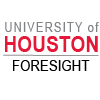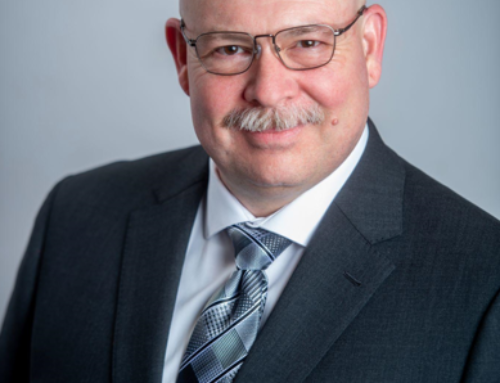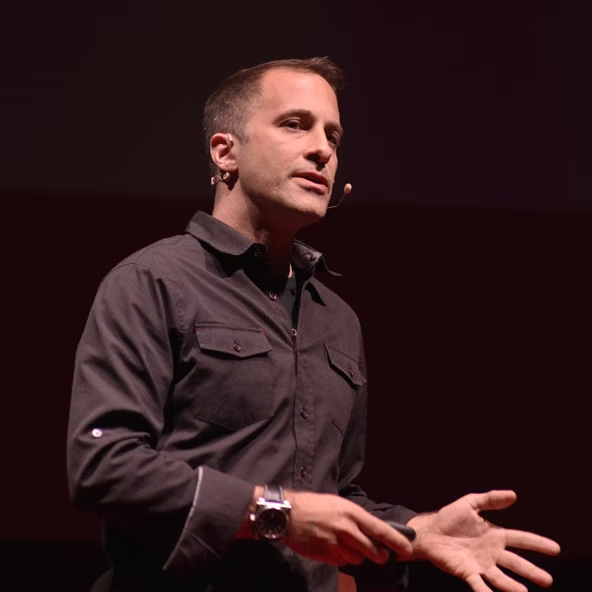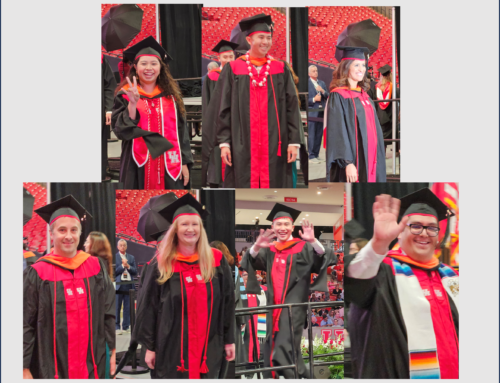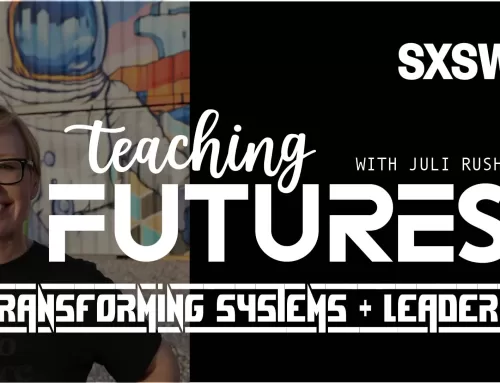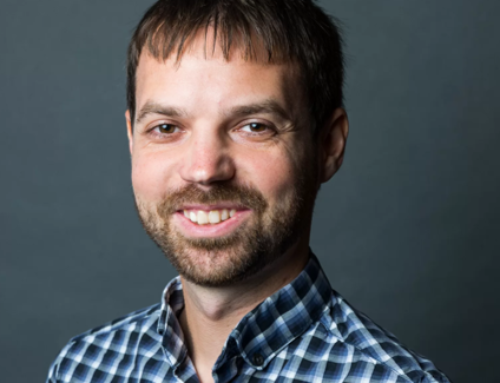Guest Contributor Heather Benoit Executive Vice President of Strategic Foresight, Alliance for Innovation
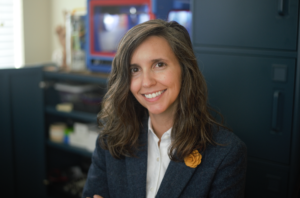 There’s something about possibility that has always intrigued Heather Benoit. While her early days in biomedical engineering taught her the mechanics of innovation, it was her stint at a design consultancy that gave her an appreciation for strategy and nuance. But it was in strategic foresight that she truly found her calling. Distinguished with an award from the Association of Professional Futurists and recognized for her work with cities across the nation, Heather’s knack for challenging conventional thinking and providing a sense of clarity stands out. Now leading the foresight and innovation charge at SGR and the Alliance for Innovation, Heather champions the proactive anticipation of change, guiding municipalities towards preferable and resilient futures. As a sought-after keynote speaker and recognized innovator, Heather blends her problem-solving prowess with futures insight, offering a grounded yet visionary approach to public sector foresight.
There’s something about possibility that has always intrigued Heather Benoit. While her early days in biomedical engineering taught her the mechanics of innovation, it was her stint at a design consultancy that gave her an appreciation for strategy and nuance. But it was in strategic foresight that she truly found her calling. Distinguished with an award from the Association of Professional Futurists and recognized for her work with cities across the nation, Heather’s knack for challenging conventional thinking and providing a sense of clarity stands out. Now leading the foresight and innovation charge at SGR and the Alliance for Innovation, Heather champions the proactive anticipation of change, guiding municipalities towards preferable and resilient futures. As a sought-after keynote speaker and recognized innovator, Heather blends her problem-solving prowess with futures insight, offering a grounded yet visionary approach to public sector foresight.
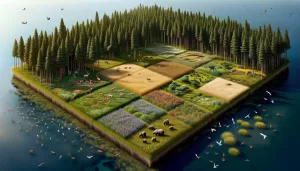
What does it mean to live in the Anthropocene? In simple terms it means living in a world where humankind has left an unmistakable fingerprint on the planet. Marking the beginning of this new geological chapter has been a bit controversial, but the somewhat settled outcome is to demarcate it by the presence of radioactive isotopes deposited in soils around the globe after detonation of the first atomic bombs – an unmistakable marker of our impact1.
But looking at particles in sediment hardly reflects the harsh reality that is the Anthropocene. It is a time in which we’ve moved mountains and built cities from them. Dammed rivers to create lakes and then drained those lakes to quinch our thirst. We’ve pumped water into the ground to extract the oily remnants of animals long gone, and in so doing, we’ve triggered earthquakes and smogged the air. We’ve seeded the clouds, tamed the wind, poked holes in the atmosphere. We’ve leveled forests and acidified the ocean. We have changed the world and not for the better.
Welcome to the Anthropocene
In the face of this challenge, we continue to live our lives without true recognition of what needs to change. We continue to act carelessly. We continue to consume without regard. We continue to prioritize our comfort and convenience above all else2,3,4.
This is the reality of the Anthropocene. We know it is a problem. Yet, most of us continue living our daily lives, either ignoring the problem or feeling too small to do much about it. We can point fingers at big business, at the boogeyman of capitalism5,6. We can lament the failures of national governments to move the needle in any meaningful way7. We can choose to believe that individual actions will never be enough to shift the system8. But the reality is that our way of life, the everyday things we do, the everyday choices we make, are the root of the problem. So, if we want to change it, our way of life has to change.
Building Habitats
But changing the fundamentals of how we exist is no small task. Our behavior is, primarily, a result of the environments in which we live9,10. Our local communities provide the infrastructure, both physical and social, that dictate modern ways of learning, working, and living. Thus, with roughly 80% of the American population living under the jurisdiction of a local government, local governments become essential actors in reshaping our ways of living and moving us into the Post-Anthropocene11. Unfortunately, how we plan our cities is often rooted primarily in present-day needs and generally looks like this:
- Observe the current conditions of the area.
- Prioritize the immediate needs, wishes, and comfort of the community.
- Tear down the existing environment.
Under this paradigm, urban planning is largely an effort in designing sophisticated habitats for humans – man-made microcosms tailored to human comfort and convenience, isolated and disconnected from the natural world. But such a process is really quite strange. Can you imagine if nature were “planned” the way our urban environments are?
- With plants and animals zoned by the block?
- Where deer and rabbits stand nose-to-tail in a line of traffic, the way cars sit bumper to bumper?
- Where beavers import wood from the other side of the world to build towering dams that dominate the landscape?
Yet, we don’t bat an eye when we build our cities in this manner.
Creating Symbiosis
To transition to the post-Anthropocene, we need a reconceptualization of urban planning and a more holistic paradigm that views the city as an ecosystem, rather than just a habitat. We need a paradigm of symbiosis:
Symbiosis: A biological relationship between two or more organisms that is mutually beneficial, with each species contributing to the well-being or survival of the other(s).
Reconceptualizing urban planning under such a paradigm means adopting a design and policy framework that prioritizes mutualistic interactions among all elements of the urban environment, from natural to built and from human to non-human. We can accomplish this by recentering governance around:
- Holistic Land Use: shift land-use practices from dominion to integration.
- Resource Loop Closure: implement policies to ensure activities and resources align with ecological balance.
- Post-Anthropocentric Representation: establish frameworks for including all environmental stakeholders in decision-making.
Speculative Policy Levers
These are bold, radically different approaches to designing urban spaces that are sure to be met with skepticism. As foresight practitioners, we are taught to discover the possibilities of the future, to articulate them in such a way that they generate insight and, hopefully, action. Yet, all too often, foresight stalls out after delivery of a final report. Something is lost in translation and bridging that gap between insight and action remains a fundamental challenge. Some may argue that this is the natural boundary of foresight, that what lies beyond falls to the practice of change management. But it is my belief that, if foresight’s ultimate purpose is to usher in better futures, implementation is every bit as important as imagination. We cannot leave clients with options when they are actually seeking a clear path forward, so we’ve focused on creating pathways to change that are deeply contextualized to our clients by translating lofty visions into something already present in their daily work:
- Holistic Land Use = Zoning
- Resource Loop Closure = Utilities
- Post-Anthropocentric Representation = Community Engagement
Instead of confronting clients with a singular grand vision, which can feel impossible to attain, we are encouraging incremental “transformative” change through the use of a Mild-to-Wild spectrum of change. Using this tool, we present speculative policies that incrementally shift from mild changes to bolder, wilder changes further removed from the norms of today. At each increment we show real-world examples of projects already under way, giving clients a clear strategic pathway to transformation and a model for how to get there. Because, in the end, it’s the getting there that counts most.
References
- Ellis, Erle C. (2018). Anthropocence: A Very Short Introduction. Oxford University Press.
- Lee, Jane J. (2015, 08, 17). How Did Sea Turtle Get a Straw Up Its Nose? National Geographic. https://www.nationalgeographic.com/animals/article/150817-sea-turtles-olive-ridley-marine-debris-ocean-animals-science
- Meador, Ron. (2017, 03, 09). Human carelessness is more responsible than climate change for worsening wildfires. Minn Post. https://www.minnpost.com/earth-journal/2017/03/human-carelessness-more-responsible-climate-change-worsening-wildfires/
- Monbiot, George. (2014, 05, 09). Why we couldn’t care less about the natural world. The Guardian. https://www.theguardian.com/environment/georgemonbiot/2014/may/09/why-we-couldnt-care-less-about-the-natural-world
- Monbiot, George. (2021, 10, 30). Capitalism is killing the planet – it’s time to stop buying into our own destruction. The Guardian. https://www.theguardian.com/environment/2021/oct/30/capitalism-is-killing-the-planet-its-time-to-stop-buying-into-our-own-destruction
- Ahmed, Nafeez. (2020, 10, 21). Capitalism Will Ruin the Earth By 2050, Scientists Say. Vice. https://www.vice.com/en/article/v7m48d/capitalism-will-ruin-the-earth-by-2050-scientists-say
- S. Congress Joint Economic Committee, Majority Staff. Inaction on climate change will have devastating consequences for the economy, families, and communities. https://www.jec.senate.gov/public/_cache/files/148b9bdf-3d64-467a-97e7-2903dce79097/jec-climate-inaction-brief.pdf
- Hogan, Yarrow. (2023, 03, 06). Ignorance isn’t a justification for careless environmental inaction. The Channels. https://www.thechannels.org/opinion/2023/03/06/ignorance-isnt-a-justification-for-careless-environmental-inaction/
- Chu, Melissa. (2017, 08, 21). Why Your Environment is the Biggest Factor in Changing Your Life. https://www.inc.com/melissa-chu/its-possible-to-design-your-environment-to-help-yo.html
- Barsbai, T., Lukas, D., Pondorfer, A. (2021, 01, 14). The environment shapes behavior. Max Planck Gesellschaft. https://www.mpg.de/16253036/0112-evan-where-you-live-shapes-how-you-behave-150495-x
- S. Census Bureau. (2022, 12, 29). Nation’s Urban and Rural Populations Shift Following 2020 Census. Census.gov. https://www.census.gov/newsroom/press-releases/2022/urban-rural-populations.html#:~:text=Despite%20the%20increase%20in%20the,down%20from%2080.7%25%20in%202010.
